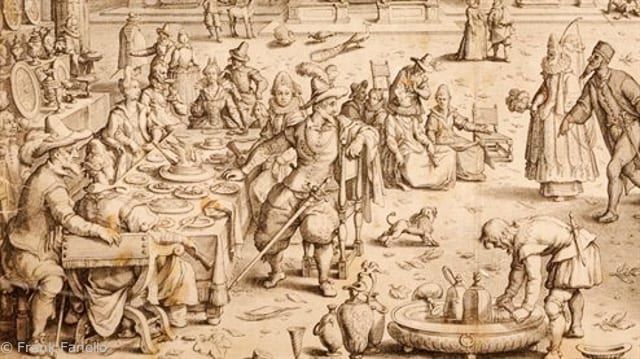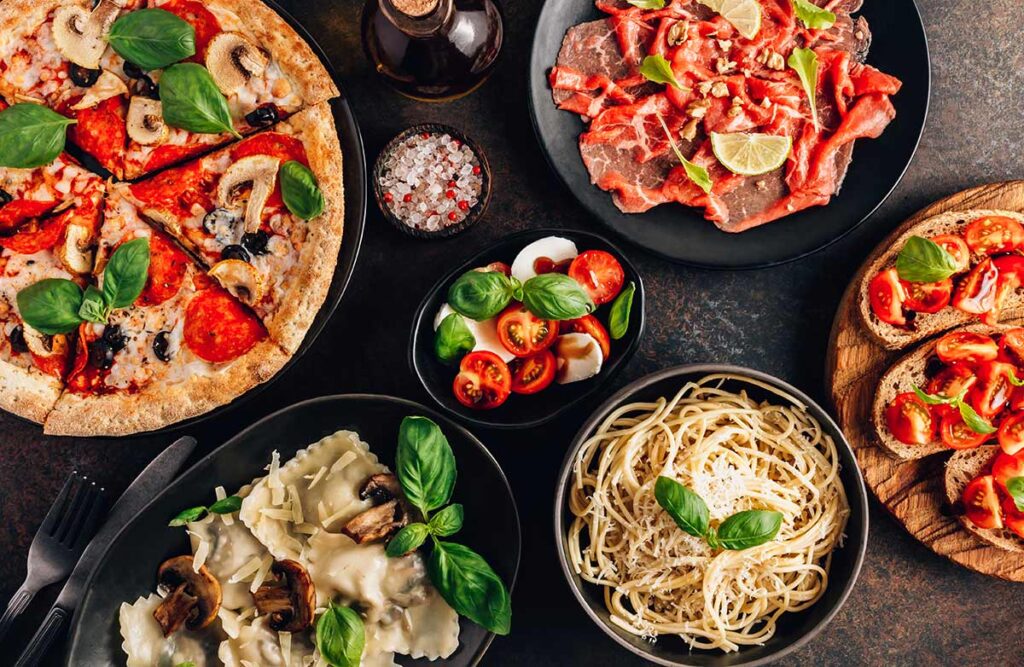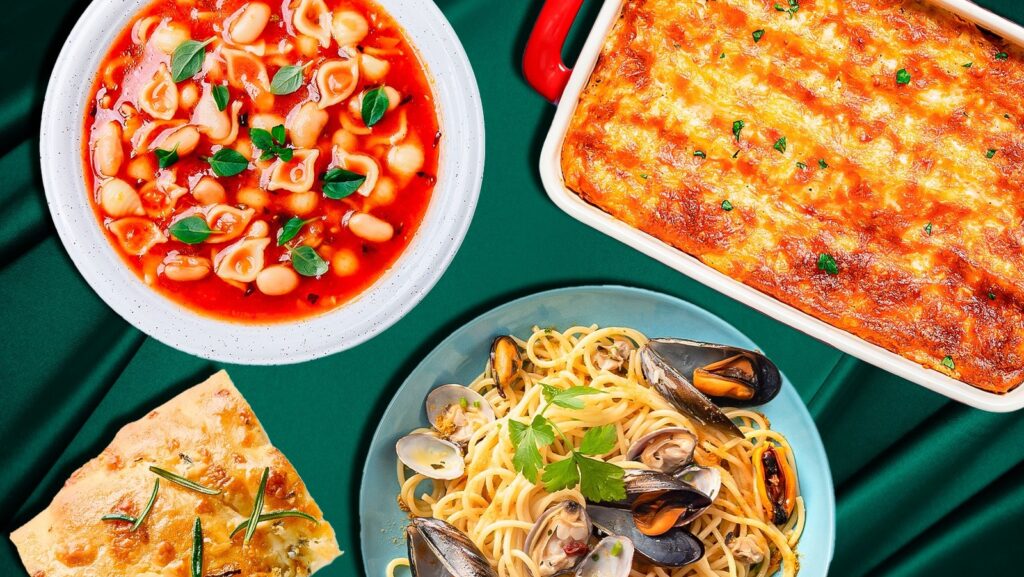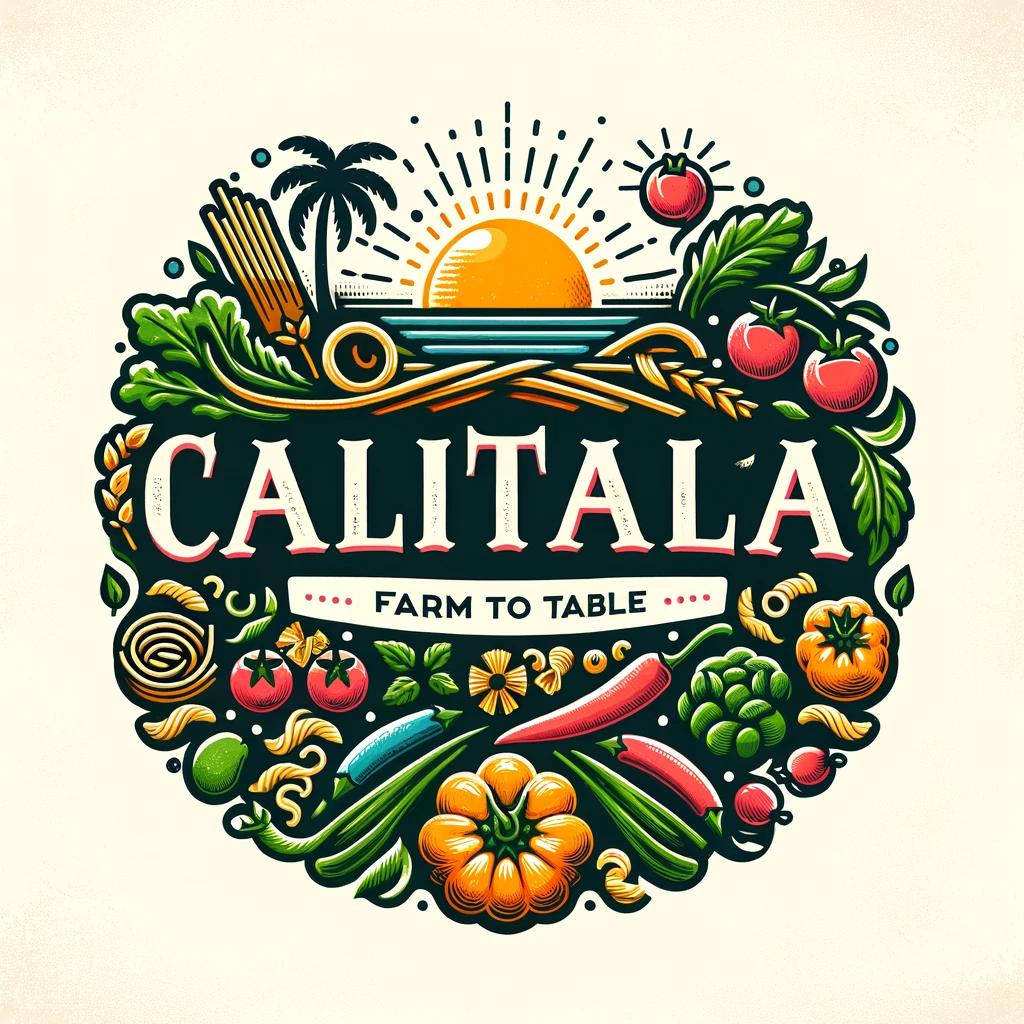Hey, ever wonder how Italian cuisine got its chops? It’s like diving into a centuries-old treasure chest filled with recipes. From the sun-drenched fields of Tuscany to the bustling streets of Naples, every bite of Italian food tells a story of regional diversity and culinary evolution. We’re talking about a journey and Origin of Italian Food that started way before pasta met meatballs.

This article’s going to unpack those layers, taking you from ancient grains to modern-day pizza. Ready to get a taste of history and find out why your spaghetti Bolognese sings with so much flavor? Let’s dig in and discover the Italian cuisine. And hey, maybe you’ll be inspired to cook up something authentically delizioso tonight!
What Culture Inspires Italian Food?

Italian cuisine is like a melting pot of flavors and traditions, simmering with influences from a bunch of different cultures. The Greeks tossed in their olives and wine-making skills. The Arabs rolled in during the Middle Ages, bringing sugarcane, citrus, and nuts—oh, and they’re the reason we can thank for dried pasta. Even the Normans and Spanish left their fingerprints on the pantry of what we now consider Italian staples.
But, the real MVPs? The local regions themselves. From the creamy risottos of the North fueled by butter-lush pastures, to the olive oil-drenched dishes of the South thanks to those sun-kissed groves, Italy’s own diverse landscape and climatic conditions have been pivotal. It’s a feast of local tradition with a pinch (or a handful) of global zest!
History and Origin of Italian Food
Ready for a whirlwind tour through Italian cuisine’s epic saga? Strap in! It all starts in ancient times with the Etruscans, who were all about simple, wholesome eating. They set the table for what was to come. Then, enter the Romans, who revolutionized dining with lavish feasts and introduced the world to gourmet ingredients and techniques.
Fast forward to the Middle Ages, and you’ve got the Arabs bringing in pasta (mind-blowing, right?), along with exotic spices and sweets, giving Italian food an edge that was ahead of its time. The Renaissance was next up, blending art and dining, which meant meals were not just food—they were masterpieces.

The plot twist? Tomatoes and potatoes, thanks to the New World, didn’t make the dinner scene until the 18th century. Imagine Italian food without tomatoes! Modern Italian cuisine has been about regional pride—each area showcasing its specialties. From pizza in Naples to pesto in Genoa, Italian food is a timeline of taste that keeps evolving. So, what’s next in this delicious drama? Stay tuned, keep eating, and who knows—you might be witnessing the next big culinary invention!
What is Italian Food Most Known For?
When you think of Italian food, what jumps to mind? Probably a steaming plate of pasta, right? Well, that’s just the tip of the iceberg—or the basil leaf on the pizza, if you will. Italian cuisine is a showcase of regional diversity, but there are a few stars that really make it shine on the global stage.
First up, the pastas. From silky spaghetti Carbonara to hearty lasagna, these dishes are the heartbeats of Italian kitchens. Then there’s the pizza, a worldwide love affair that started in Naples. Crispy, fluffy, topped with just about anything—you can’t go wrong.

But it’s not just about carbs. Think about the risottos, the polentas, the seafood wonders from the coasts, and those lush, garden-fresh vegetables. Cheeses like Parmesan, mozzarella, and Gorgonzola? They’re like the crown jewels. And to cap it off, the wines and olive oils—each sip and drizzle is a taste of Italy’s soul.
The Foundation of Italian Cuisine
Diving into Italian cooking is like opening a treasure chest of flavors—each ingredient a gem that brings its own sparkle. At the heart of Italian cuisine are some cornerstone ingredients that are essential to getting that authentic taste. Here’s the lineup:
- Olive Oil: The liquid gold of Italian food. It’s the base for sautéing, dressing, and drizzling over just about everything.
- Garlic: Whether sliced, diced, or crushed, garlic adds a pungent punch that’s foundational in many dishes.
- Tomatoes: Fresh, canned, or in sauce form, tomatoes are the backbone of countless Italian recipes, from pasta sauces to pizzas.
- Basil: Think pesto and caprese. Basil brings a fresh, peppery sweetness that brightens up dishes.
- Pasta: From spaghetti to ravioli, pasta is a staple that’s as versatile as it is beloved.
- Cheese: Parmesan, mozzarella, ricotta—each adds a distinct texture and flavor, from salty and sharp to creamy and mild.
- Balsamic Vinegar: Used in dressings and to add a sweet-tart depth to dishes.
- Seafood: Coastal areas especially make extensive use of fish and shellfish in their local cuisines.
- Wine: Used in cooking to add richness and flavor to sauces and stews.
- Meats: Cured meats like prosciutto, salami, and varieties of sausages are crucial for antipasti and flavoring dishes.
These ingredients are just the starting points that make Italian cuisine so irresistibly delicious. Mix and match, and let each meal be a celebration of Italy’s culinary spirit!
Wrapping Up
Italian cuisine isn’t just food—it’s a vibrant expression of life’s simplest and finest pleasures. Each dish is a testament to the country’s rich history, diverse cultures, and a commitment to quality ingredients. Whether it’s the simplicity of a Margherita pizza or the complexity of a slow-simmered Bolognese, Italian cooking brings versatility and flavor to the table like no other.
So why not roll up your sleeves and bring a piece of Italy into your kitchen? Experiment with these foundational ingredients and who knows, maybe you’ll stir up your own family favorite. Dive into the art of Italian cooking and let every meal be a celebration!







